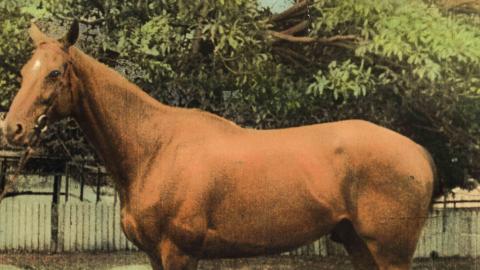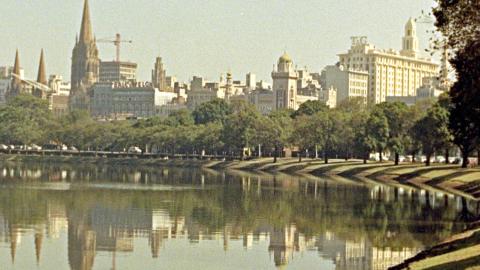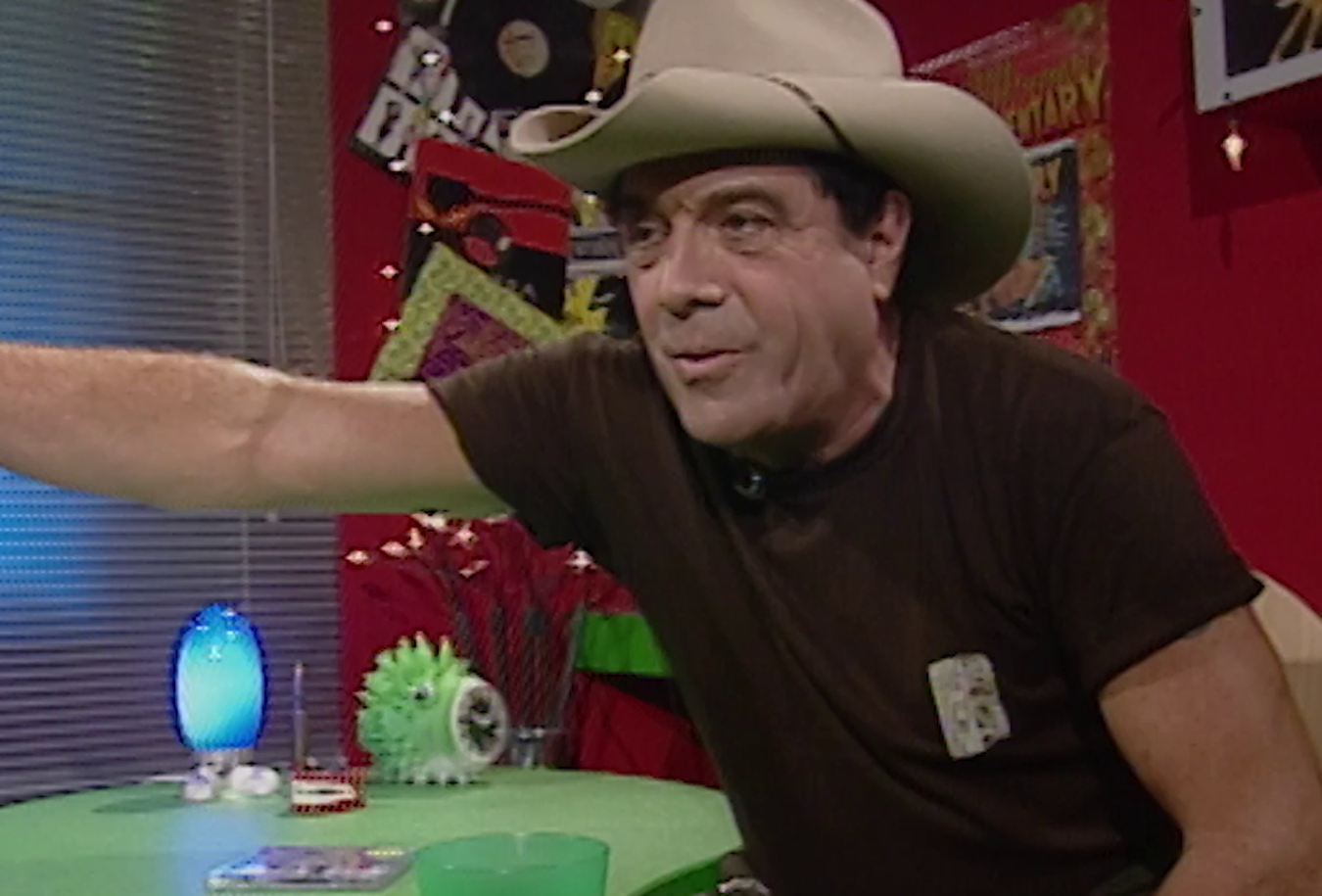
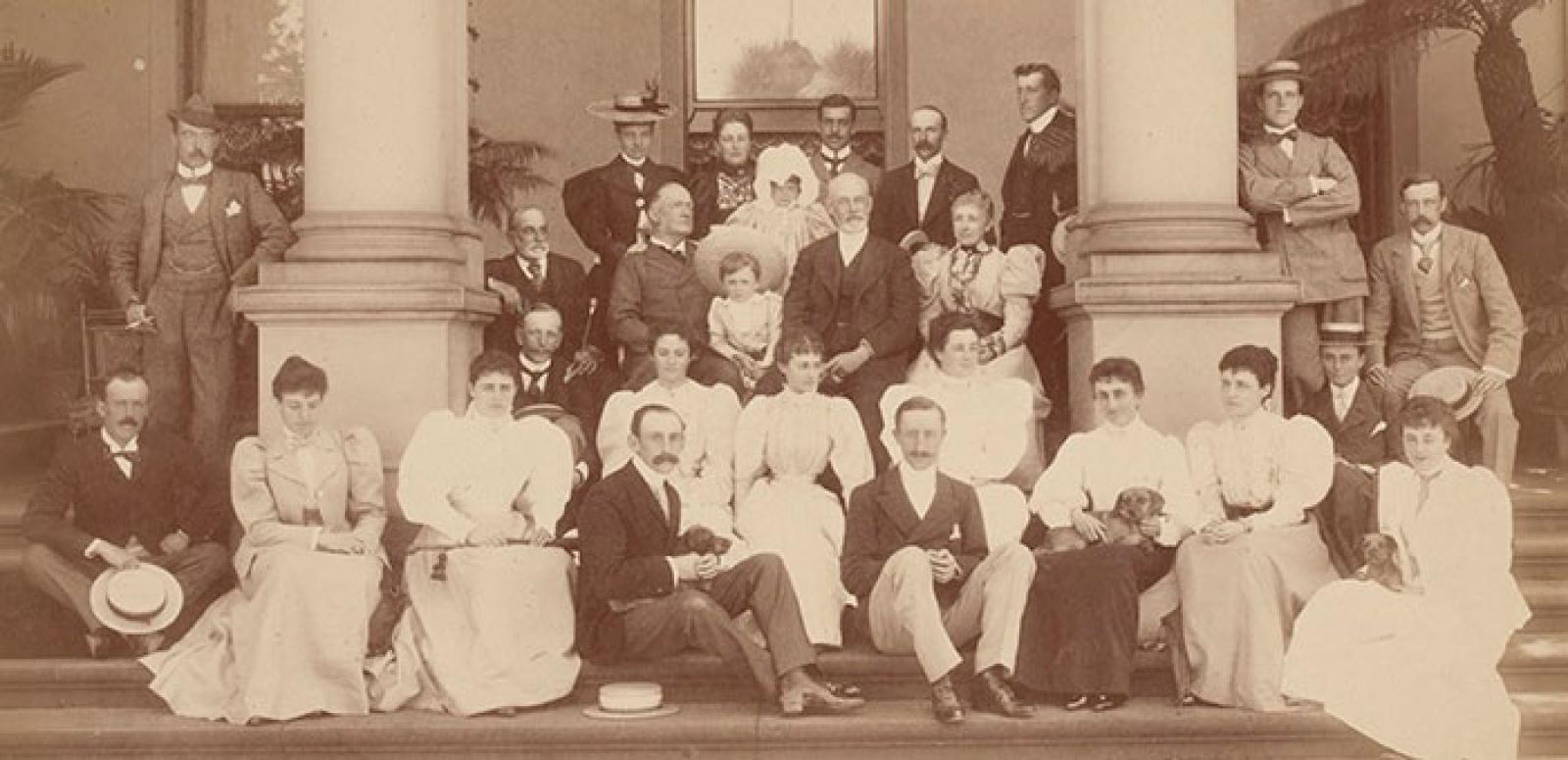
Melbourne Cup fashion, 1896
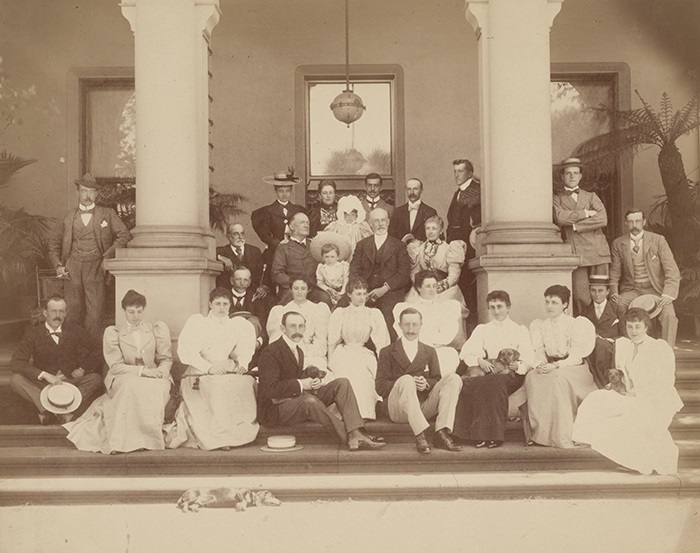
In the 21st century the fashion stakes at Melbourne Cup are high. Images of dresses, hats and stars are quickly spread across the globe via all available media platforms. We recognise the faces and places and can contextualise them within our world. Images from Cup day have been around since the 1800s when sketches and engravings were published in the press, the result of artists’ impressions as they roamed Flemington.
As technology advanced the photographic image replaced the sketch but it was the moving image that truly captivated audiences. The rich, the powerful, the famous and the important could now be presented to the world more faithfully identified than in print; their face, their haute couture, their social standing now a matter of public record, their celebrity confirmed for posterity. Nearly 120 years later we can still read their names and see their gowns and understand who they are and where they stood in the social hierarchy by analysing one of Australia’s oldest surviving films, 1896 Melbourne Cup (1896) NFSA title:6071.
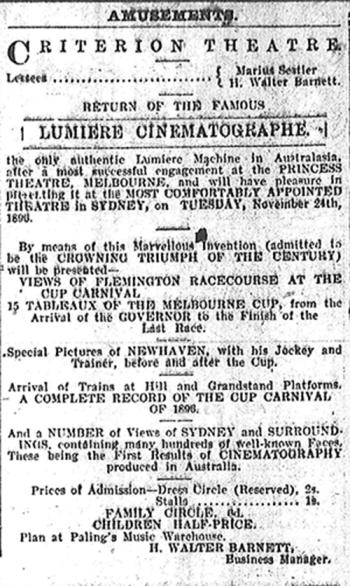
The 1896 Melbourne Cup Carnival films, made by frères Lumière representative Marius Sestier and Australian high society photographer Henry Walter Barnett with the Cinématographe Lumière, formed the main part of Australia’s first locally produced and successfully screened cinema program. The first public screening was presented by Sestier at Melbourne’s Princess Theatre on 19 November 1896 as part of the Lady Brassey Fund for the Blind Asylum benefit matinee. Sestier and Barnett presented the first Australian program in Sydney at the luxurious Criterion Theatre on 24 November 1896.
This new invention of cinema had the power to elevate social celebrity to greater heights. Now, not only the still image but a moving image of oneself could be seen, potentially, around the country, even the world. When the films screened in Australia, contemporary reports exclaimed that they were a who’s who of Australian society, the audiences recognising many famous faces:
The audience found a vast fund of amusement in picking out well-known faces as they occurred in the throngs, and, indeed, quite a society column of 'those present’ might be written if space permitted. The Daily Telegraph, 25 November 1896.
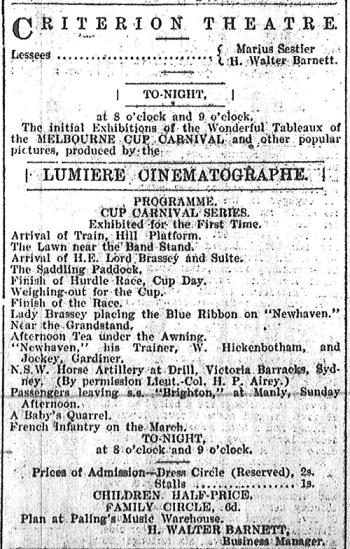
Unfortunately, no one created a list of who was in the films and, although the potential for recognition and increased celebrity was at that moment the highest it could be, now, more than 100 years later, in those 1896 Melbourne Cup films the faces are anonymous, their significance lost to modern audiences. Those first films were silent so there was no narration or superimposed text to describe the action or to identify people.
We know famous people were filmed due to the contemporary newspaper reports in which several names are given: Lord and Lady Brassey, Mrs Elizabeth Brough, Mr George Titheradge, Mr Tom Fitzgerald, Maurice Quinlan and Henry Walter Barnett. But to see celebrities moving across a screen added yet another dimension to the films for audiences, making it impossible for them to look away and ensuring their desire to spend another shilling for a return visit. When Barnett, who was renowned for his ability to construct a photographic image, guided the famous in front of the camera he knew exactly what he was doing.
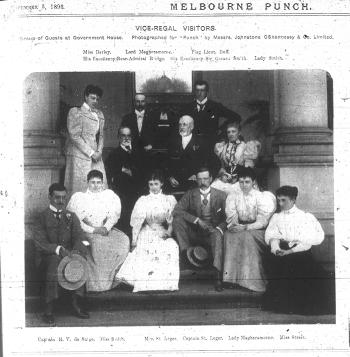
Two films – The Lawn Near the Bandstand, which features high-profile theatrical stars, and The Arrival of HE Brassey and Suite, which features the guests of Lord and Lady Brassey at Government House in Melbourne – offer rich content for research. Conveniently, these people were often in the news and had their photographs taken so matching the faces to the film together with society column descriptions of the women’s Cup gowns has made it possible to identify individuals.
With thanks to NFSA Imaging Services’ Brooke Shannon for her work on the images and to the Association Frères Lumière for their gracious permission to use these stills.
The National Film and Sound Archive of Australia acknowledges Australia’s Aboriginal and Torres Strait Islander peoples as the Traditional Custodians of the land on which we work and live and gives respect to their Elders both past and present.

